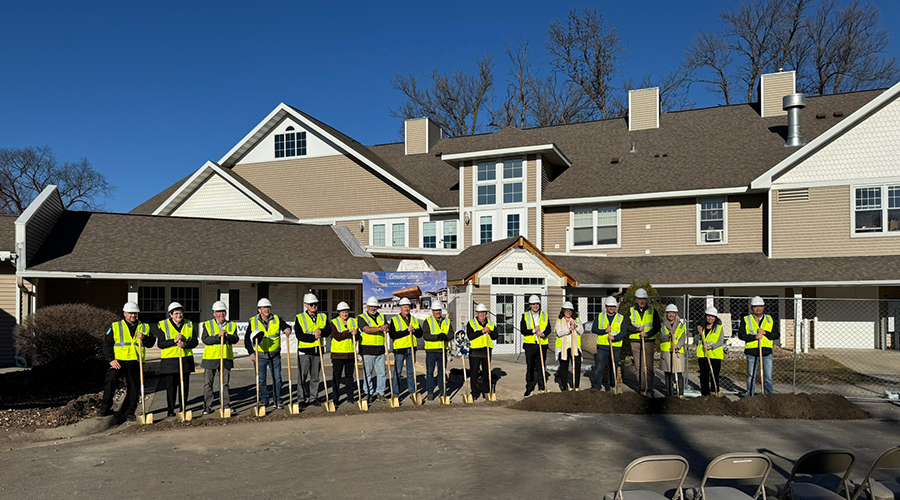In an evolving world, the resilience and adaptability of healthcare systems play a critical role in safeguarding the safety and well-being of individuals and communities. Effective healthcare emergency management is essential for navigating the complex landscape of disasters, whether they have natural, human or technological origins. Establishing a robust framework that seamlessly integrates healthcare resources, expertise and coordination with industry partners and government agencies is paramount.
One vital aspect of modern healthcare emergency management is the collaboration and coordination embodied in the current draft of the U.S. Health and Human Services (HHS) National Health Care Preparedness and Response Capabilities developed by the Administration for Strategic Preparedness and Response (ASPR). Building on the foundation laid by the 2017-2022 capabilities, these new capabilities provide strategic guidance to healthcare and emergency response partners for shaping priorities, programs and support.
Healthcare landscape
The 2017-2022 capabilities and healthcare landscape have faced a number of challenges:
- Implementing essential response capabilities that focus solely on acute hospitals requires significant resources, including finances, training and infrastructure, which is often hindered by limited funding.
- Coordinating efforts among diverse agencies and levels of government can lead to complexities, potentially resulting in response gaps. At the same time, political and bureaucratic factors can impede swift resource deployment, hindering effective response efforts.
- The evolving nature of threats, such as emerging infectious diseases, shifting weather patterns, violence and cyber threats, demands constant updates to the framework. Varied local contexts also make universal standardized frameworks difficult to apply.
- Evolving insights increase the complexity of evaluating and improving preparedness strategies.
- Effective communication with stakeholders and the public is challenging, and involving the public in preparedness efforts requires intricate strategies.
To address these challenges, ASPR is updating the capabilities to establish a standardized, adaptable and interoperable framework for healthcare emergency management. Each capability focuses on distinct aspects of preparedness and response, encompassing a spectrum of activities required to mitigate, respond to and recover from emergencies. These capabilities provide guidance not only to hospitals but to the entire healthcare industry and ecosystem of responders, regulators and partners who collaborate to safeguard public health during times of crisis.
Objectives of capabilities
The healthcare preparedness and response capabilities in HHS’s new draft supersede the previous framework, and they respond to evolving industry needs and changes in emergency management. At their core, the capabilities aim to achieve several key objectives:
Unified approach. The capabilities bridge gaps between stakeholders and harmonize efforts across healthcare organizations, public health agencies and emergency responders. This approach prevents fragmented responses, ensures efficient resource allocation and maximizes the effectiveness of healthcare systems during emergencies.
Adaptability. The framework's structured approach is adaptable to a range of emergencies and can be tailored to suit challenges posed by different threat scenarios.
Equity and access. An equitable response is the cornerstone of the capabilities. Providing unbiased and accessible care to all community members, including vulnerable populations, addresses healthcare disparities and fosters social cohesion.
Resilience. Healthcare systems must be able to withstand disruptions and continue functioning even when faced with challenges. The capabilities bolster healthcare organizations' resilience by emphasizing operational continuity, workforce readiness and resource management strategies.
Continuous improvement. The capabilities encourage continuous assessment, evaluation and feedback mechanisms, enabling healthcare entities to continually refine their preparedness and response strategies and ensure they remain effective.
National framework. The capabilities provide a shared, national language and framework, facilitating collaboration between state, local, tribal and territorial entities and coordination with federal agencies. This standardization ensures a cohesive, efficient response that transcends jurisdictional boundaries, enabling a well-coordinated effort that draws on the strengths of all parties.
Public confidence. During crises, public confidence in healthcare systems is paramount. The capabilities emphasize transparent communication, ethical decision-making and community engagement, which helps reassure the public.
Capabilities categories
The capabilities focus on eight categories: incident management and coordination; information management; patient movement and distribution; workforce; resources; operational continuity; specialty care; and community integration. The following summarizes four capabilities detailed in the current draft critical to ensuring effective healthcare delivery during incidents.
Incident management and coordination. Capability 1 addresses the critical imperative of a well-coordinated healthcare delivery system during incidents. It emphasizes integrating clinical expertise to inform patient care and clinical operations across all levels. Effective coordination among various organizations and the seamless integration of clinical insight into incident operations and decision-making are key components.
But introducing clinical expertise at the jurisdictional level brings complexity, raising concerns about potential authority and care delivery challenges during response efforts. Collaborative integration of clinical expertise ensures an effective response while maintaining the integrity of care delivery.
Information management. Capability 2 is particularly significant for healthcare, as it is driven by the imperative to establish a healthcare delivery system where partners can access, analyze, use and report critical incidents and healthcare system capabilities. Healthcare-specific information management systems must capture essential data, such as census categorized by care type, resources necessary for clinical operations and specialized staffing needs.
This healthcare-specific technology must also extend its support beyond hospitals to encompass diverse healthcare organizations, including long-term care facilities, dialysis centers, clinics, behavioral health institutions and public health initiatives. Unlike generic emergency management technologies designed for municipalities, healthcare requires technology tailored to its complexities to meet patients' unique needs.
Workforce. Capability 4 addresses the need for a resilient, well-prepared workforce, which is the bedrock on which successful healthcare operations rest and the cornerstone of an effective healthcare response. Staffing ensures optimal patient care delivery and supports specialty services during emergencies. Such a workforce must be ready to deliver safe and optimal patient care during both routine and emergency scenarios. This capability recognizes the pivotal role of the workforce in enabling systems to surge and accommodate patient influxes. It also underscores the importance of workforce planning.
Specialty care. Capability 7 focuses on the effective coordination and delivery of specialized medical and surgical care during disasters. Specialty medical care resources are not evenly distributed nationwide, so there is a significant need for healthcare partners to coordinate across multiple jurisdictions while integrating existing clinical expertise with incident command structures to avoid fragmentation of services.
The strength of this capability lies in its comprehensive approach to addressing various surge events, such as mass trauma, burns, radiological, chemical, special pathogens and pediatric cases. Past events where patient numbers exceeded available resources have highlighted the need for trained personnel, equipment, coordination mechanisms and specialist consultation in surge situations.
The current draft of HHS’s National Health Care Preparedness and Response Capabilities represents a comprehensive, transformative approach to healthcare emergency management. The successful implementation of these capabilities hinges on recognizing and embracing the full breadth of healthcare providers beyond hospitals.
An array of healthcare settings, including long-term care, behavioral health facilities, and clinics, play pivotal roles in the continuum of care. It empowers patient movement and distribution, strengthening the resilience and responsiveness of the entire healthcare system.
Matthew Icenroad, CSSGB, CCMP, is a director at Jensen Hughes. He provides support for client consulting projects, including healthcare emergency management, and leads the strategic vision and innovations of the Jensen Hughes Digital ProtectAdvisr application.

 AI Usage for Healthcare Facilities
AI Usage for Healthcare Facilities Ground Broken on Pelican Valley Senior Living Modernization Project
Ground Broken on Pelican Valley Senior Living Modernization Project All-Electric UCI Health – Irvine Hospital Set to Open
All-Electric UCI Health – Irvine Hospital Set to Open The Rising Strategic Value of Owner's Reps in Healthcare
The Rising Strategic Value of Owner's Reps in Healthcare Lawrence Group Designs Pair of Ignite Medical Resorts in Missouri
Lawrence Group Designs Pair of Ignite Medical Resorts in Missouri